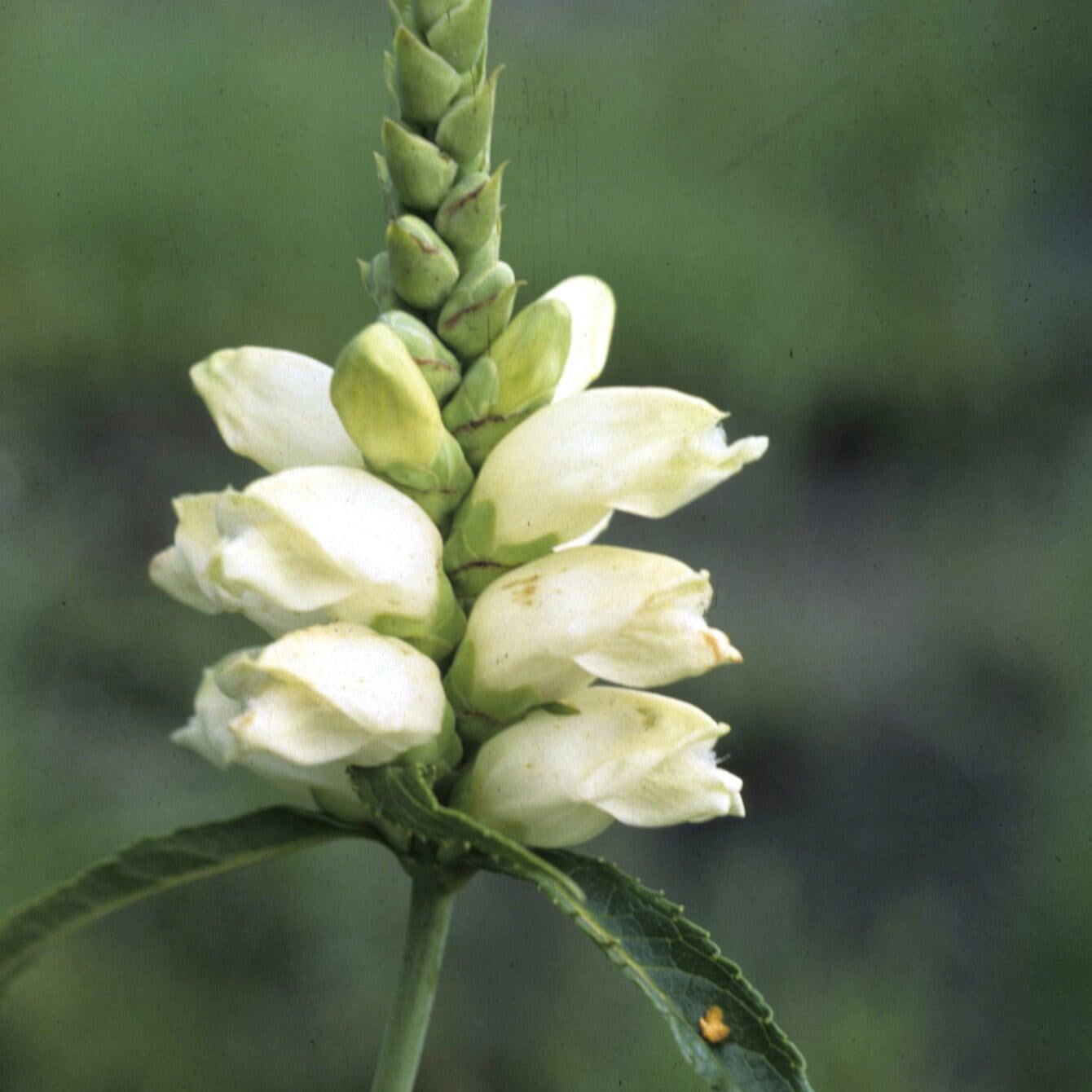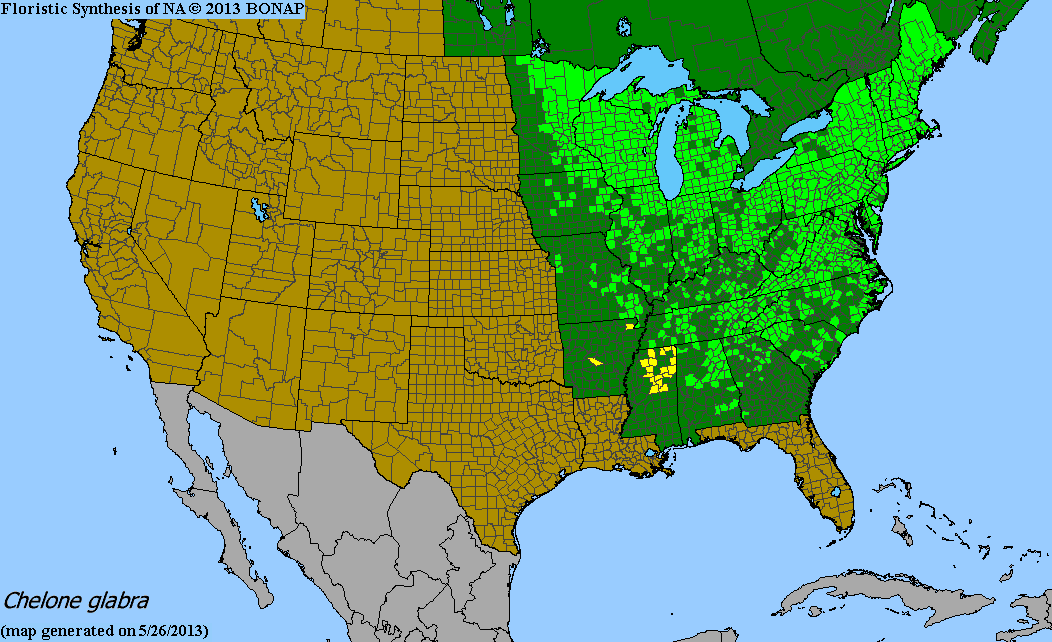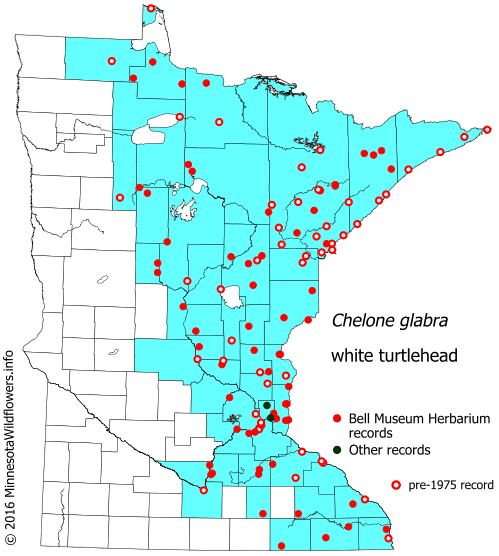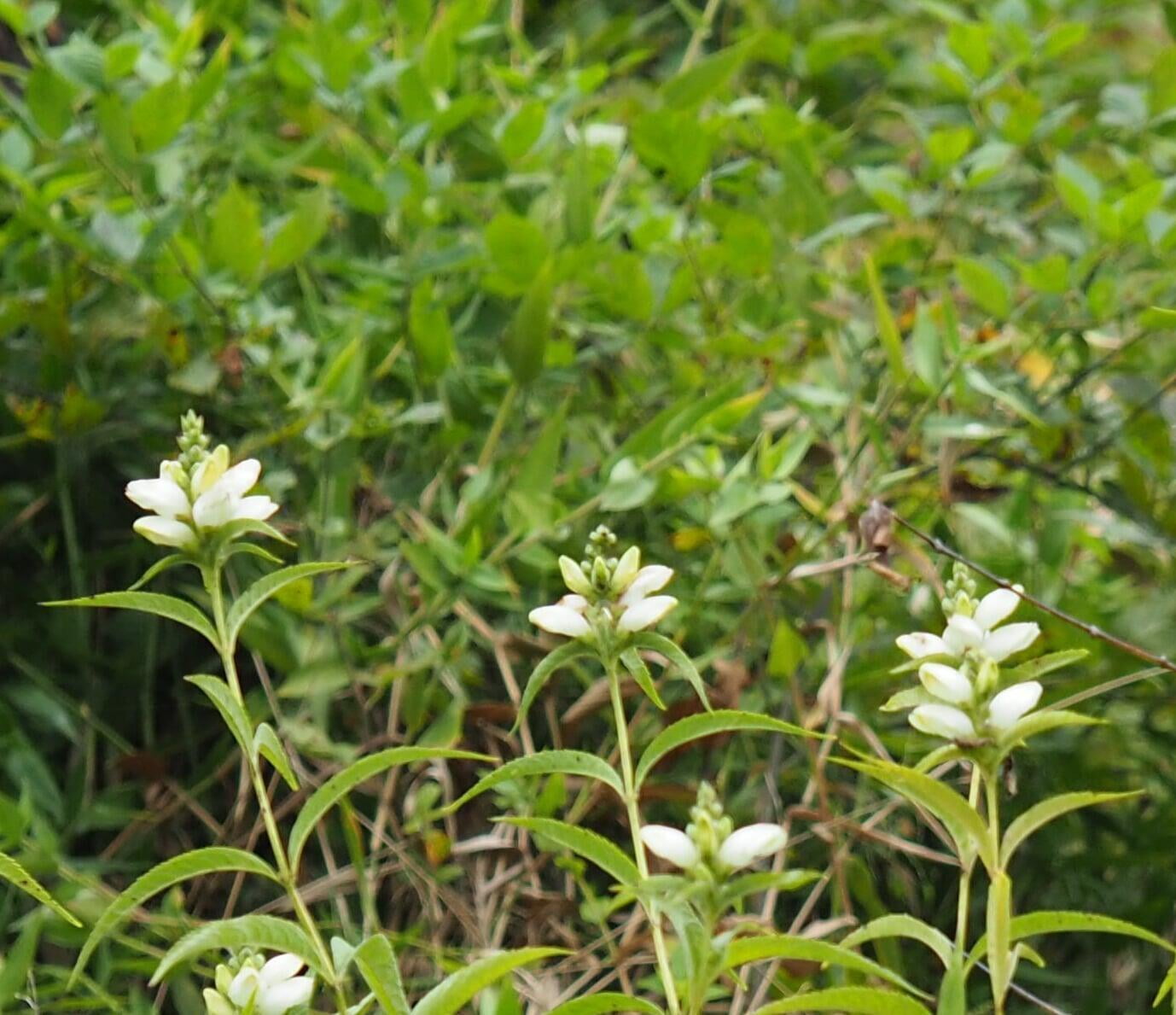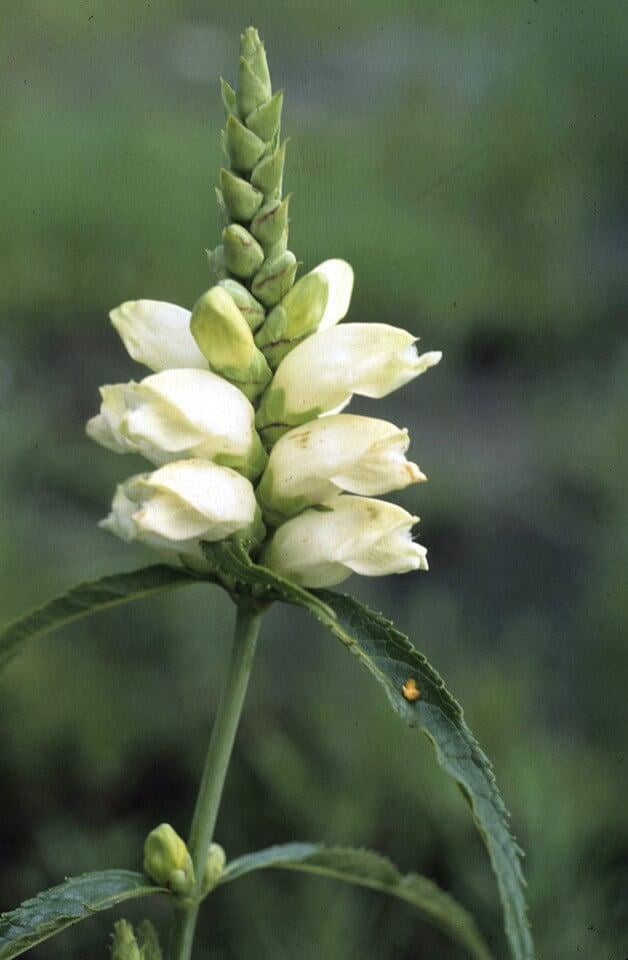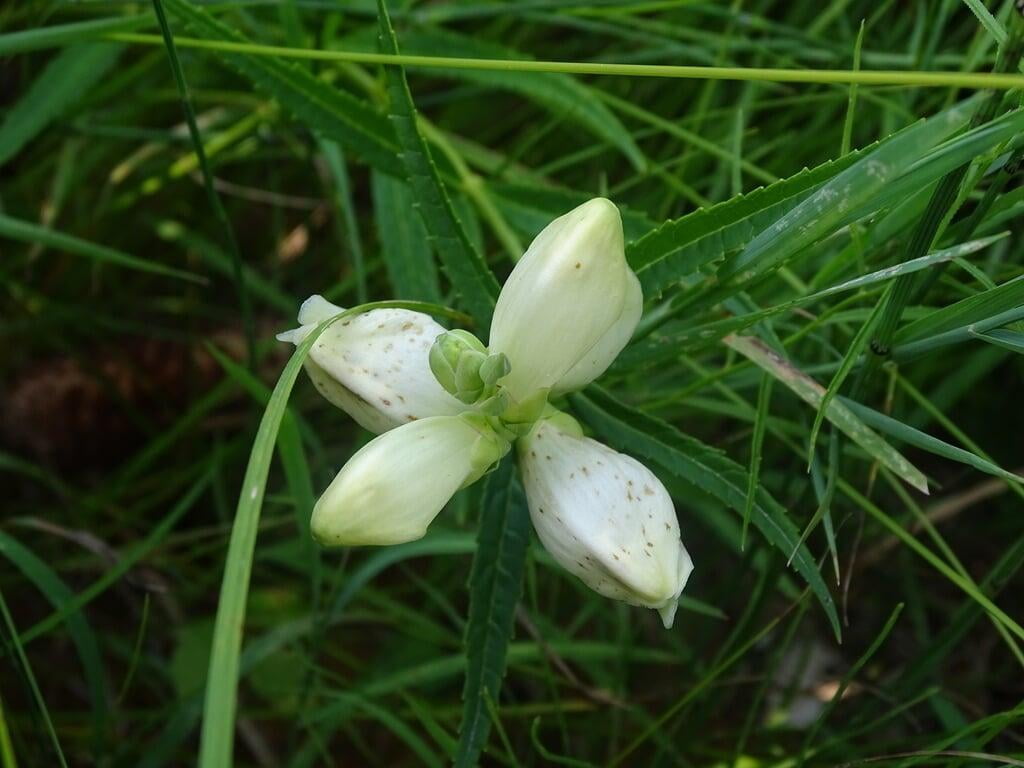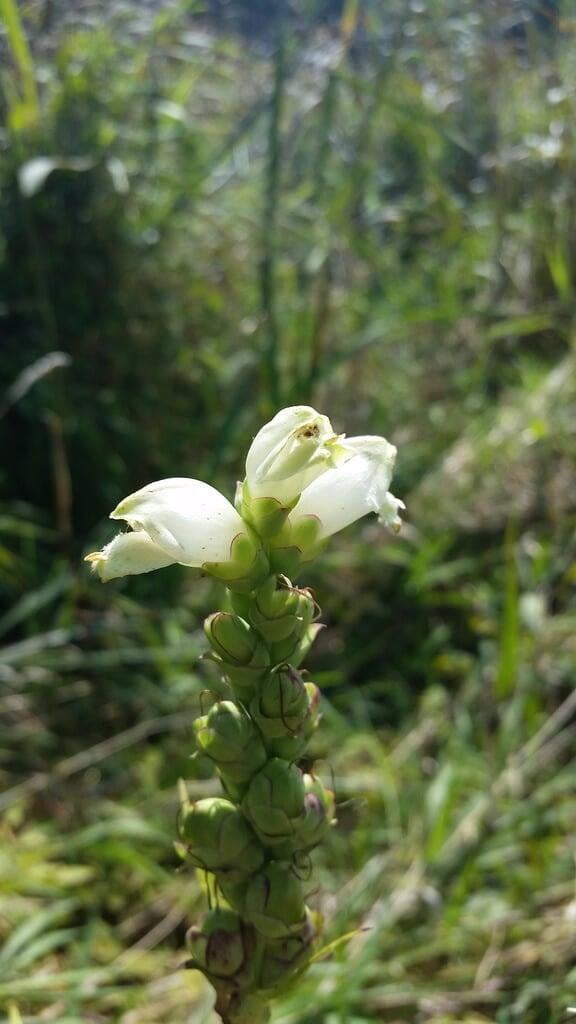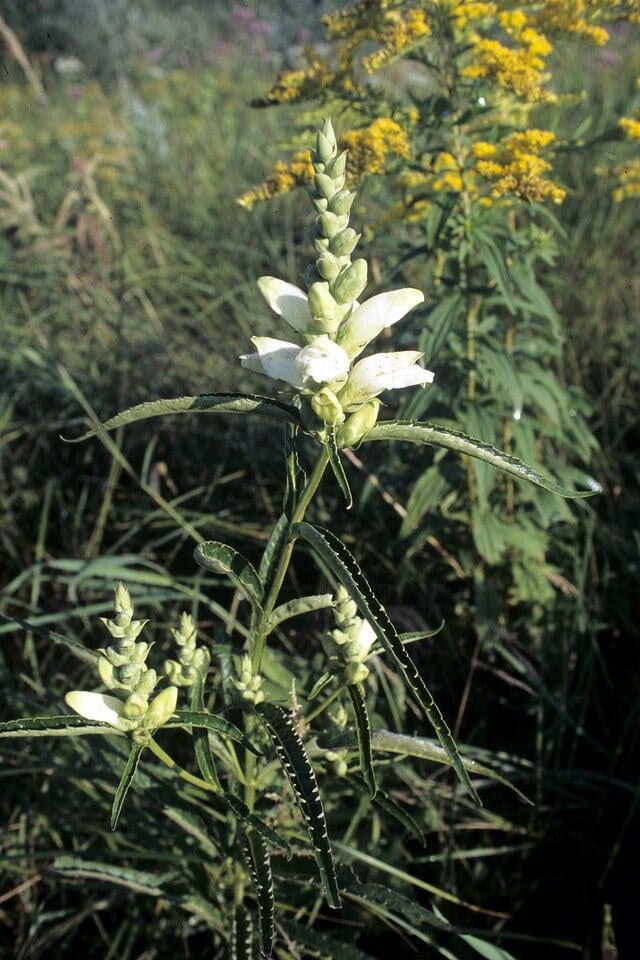Chelone glabra
Turtlehead Description:
Chelone glabra, commonly known as turtlehead, is a herbaceous perennial plant that is native to North America. It typically grows 2 to 4 feet tall and wide, with an upright habit and deep green, lance-shaped leaves that are 3 to 6 inches (7.5 to 15 cm) long.
In late summer to fall, Chelone glabra produces distinctive spike-like clusters of tubular, white flowers with pinkish-purple buds that resemble the head of a turtle, hence the common name "turtlehead". The flowers are about 1 inch (2.5 cm) long and are attractive to bees, butterflies, and hummingbirds.
Chelone glabra prefers wetlands, marshes, and streambanks, but can also grow in garden settings with full sun to partial shade and well-drained soil. It has medicinal properties and is also commonly used in native landscaping.
Native Range:
Turtlehead grows natively in most of the central to Eastern United States. In Minnesota, Turtlehead grows mostly in the central to Eastern regions of the State.
Standard Plant Information:
Plant Height: 2' - 4'
Bloom Time: August - September
Preferred Habitat: Does well in part shade to full sun along wet meadows, shorelines, and wetlands.
Sowing:
For most homeowners, the best option is to scatter seed on the ground by hand broadcasting at a minimum of 16-64 pls ounces per acre. For even coverage, we recommend that you broadcast seed in perpendicular rows across the site to ensure even coverage.
You’ll want to broadcast any grass seed first, which will get raked into the soil lightly. Next, it is ideal to mulch the area lightly with either a clean (no seed) straw or preferably with our native Little Bluestem straw, sold at our retail garden centers. After a light mulching is complete, now it’s time to broadcast your native wildflower seeds, which should not be raked into the soil. A good rain or watering is sufficient to cover the seed.
Planting:
Simply dig a hole in the soil slightly larger than the plant’s roots. Ensure that the soil line of the plant is maintained during the transfer (i.e. the plant should be at the same level with the ground as it was in the pot). Pack any loose dirt back around the plant and make sure you water it well the same day to ensure it has the best chance of survival.

